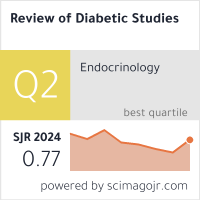Long-Term Diabetes Medication And Bone Density: A Radiologic Perspective
DOI:
https://doi.org/10.70082/fv8b6f59Keywords:
Diabetes, bone density, osteoporosis, antidiabetic medications, bone turnover, radiology, MRI, DXA, BMD, fracture risk, insulin, metformin, thiazolidinediones, DPP-4 inhibitors, SGLT2 inhibitors.Abstract
Diabetes, an endocrine disorder characterized by chronic hyperglycemia, is estimated to affect 422 million individuals worldwide, with Type 2 Diabetes Mellitus (DMT2) accounting for nearly 90% of cases. Data indicate that patients with DMT2 have an increased risk of fragility fractures despite normal or elevated Bone Mineral Density (BMD); they also exhibit abnormal bone microarchitecture, remodeling, and mineralization of bone that contribute to this heightened risk. In DMT2, a reduced level of Bone Turnover (BT) occurs due to impaired osteoblastic activity and is associated with lower circulating levels of osteocalcin (OC), a marker of bone formation. Bone resorption markers such as serum C-Telopeptide of Type-I Collagen (CTx) are also low. Although commercial methods for evaluating BT are available, evidence linking these markers of BT to fracture risk remains limited. Given the relation between DMT2 and abnormal BT, the impact of Diabetes medications on BMD and BT forms an important area for investigation. Such agents are widely known to affect calcium levels, vitamin D metabolism, and parathyroid hormone (Padilla Apuntate et al., 2024).
A systemic skeletal disease characterized by decreased BMD and microarchitectural deterioration, osteoporosis elevates fracture risk. In Europe, Japan, and the USA, over 75 million individuals are affected, with the lifetime fracture risk estimated at about 40%. In India, approximately 50 million individuals had osteoporosis in 2013, and an estimated 20% of persons over the age of 50 years suffer from the disease. The rising longevity of the population and the increased prevalence of noncommunicable diseases such as osteoporosis and T2DM contribute to the public health burden. Patients with diabetes face a heightened risk of osteoporosis and fractures; women with Type 1 Diabetes Mellitus (T1DM) are 12 times more likely to report a hip fracture, while those with T2DM show a 1.7-fold increased risk. Early studies suggested that Thiazolidinediones increase bone loss and the occurrence of fragility fractures. Evidence regarding the effects of other common antidiabetic agents on bone health remain limited. Moreover, Metformin and DPP-4 inhibitors exhibit a trend toward protective effects on bone, although conclusive data are lacking. The impact of Sulfonylureas on bone remains poorly characterized. These agents may improve glycemic control, but their metabolic effects can lead to hypoglycemia and falls that increase fracture risk. Recognizing the limited data on the influence of widely prescribed antidiabetic medications on the skeletal system, a case–control study was therefore conducted in an Indian cohort (Pradeep Raj et al., 2019).
Downloads
Published
Issue
Section
License

This work is licensed under a Creative Commons Attribution-ShareAlike 4.0 International License.


